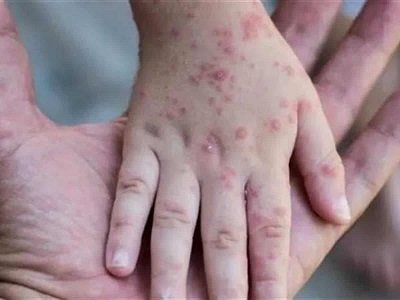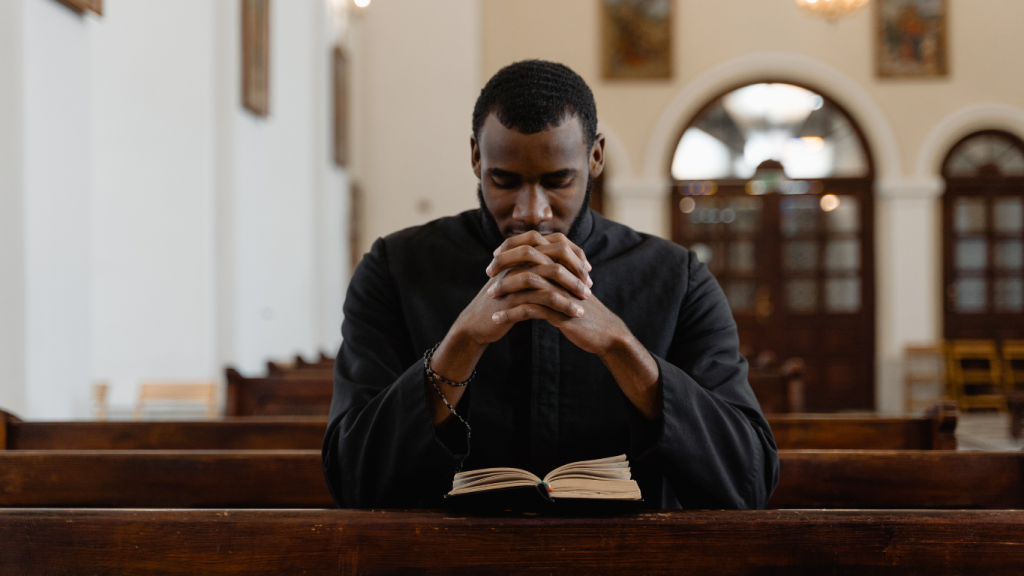Health Essentials
Monkeypox outbreak 2022 …and what you need to know

Introduction
It was a warm day in October 2003 in San Diego, California, USA. I was attending the Infectious Disease Society of America’s annual conference. I passionately stood up at a meeting to express my thoughts about media reports connecting Ghana, my country of birth, to a monkeypox outbreak in the US. Fifty three people had contracted monkeypox in a multistate outbreak.
It turned out that after testing and investigation by the CDC, the infection was related to prairie dogs purchased as pets at a pet store in Illinois. The prairie dogs had been kept close to rodents imported from Ghana, a country where the human monkeypox disease has never been reported to date. These rodents were later found to test positive for the monkeypox virus.
The prairie dogs became infected as a result of proximity to the infected rodents and then transmitted the infection to their owners. This resulted in a ban on importation of African rodents into the US to date to prevent further outbreaks. That was the last time the US had an outbreak of monkeypox disease. No one died in the outbreak. One child developed a brain infection or encephalitis.
Monkeypox, a disease caused by the monkeypox virus, occurs very infrequently and in very scattered locations in parts of Africa. There are two clades (or types) of the virus: a West Africa (WA) clade in which 1 to 3.6 out of 100 infected patients die (1% to 3.6% mortality) and the Congo Basin (CB) variant, in which about 10 out of 100 infected patients can die (10% mortality). So far, the virus isolated in this current outbreak is of the West African variant, implying that the risk of dying from this disease is very low.
Background
The outcome of the 2003 outbreak reflects concepts in the natural history of the disease. It is a zoonosis in which humans get infected from infected animals. Monkeypox disease is usually a mild self-limited illness caused by the monkeypox virus. It usually does not require treatment. It can be severe in children, pregnant women, and those with impaired immune systems.
The virus belongs to the orthopox family of viruses. It is a disease that affects animals. It was first discovered in a laboratory monkeys in Copenhagen, Denmark in 1958. The monkeys had been imported from Singapore to study the polio vaccine, giving rise to the name, “monkeypox”. Since then there have been a few more outbreaks in laboratories around the world including the US. However, mentally, people tend to associate it with Africa because in 1970, the first human case was reported in an African child.
Since its discovery in 1970, there have been infrequent occurrences in a few locations around the world. From January 1, 2022, to May 1, 2022, the Democratic Republic of Congo reported 1,238 cases with 57 deaths, while Nigeria reported 46 cases and no deaths. In July and November of 2021, two travelers returning to the US from Nigeria were diagnosed with monkeypox and recovered. Between 2018 and May 2022, there have been nine cases related to travel in non-endemic countries: Two in the US, five in the UK, one in Israel and one in Singapore. None of the travel companions were infected, and only one healthcare worker in the UK became infected.
On May 18, 2022, a man in Massachusetts with no history of travel was diagnosed with a confirmed case of the disease, and eight suspected cases are under investigation. This is occurring at a time when 250 cases have been reported since May 13, 2022, in 18 countries, in persons who have not travelled to the countries where cases have occurred in the past- suggesting a worldwide outbreak. These countries include USA, Canada, Portugal, Spain, Australia, France, Germany, Italy, Netherland, Sweden, and the United Kingdom. Portugal and Spain have the largest numbers. The cases have been found mainly, but not exclusively, in men who have had sex with men, and are seeking care in sexual and outpatient clinics for a rash appearing around the genital areas.
Signs and symptoms
Monkeypox disease starts with a headache, fever, cough, sore throat, and lymphadenopathy (enlarged lymph nodes) accompanied by muscle aches and a profound sense of exhaustion. This lasts about three days and occurs about five to 21days after exposure to an index case. This period of carrying the disease without showing symptoms is known as the incubation period. These initial symptoms are followed by a rash. The rash is made up of flat lesions (macules), which progress to palpable flat-topped rashes (papules), and then to fluid-filled lesions (vesicles). These rashes start around the mouth, progressing to the head, chest and abdomen, and then to the arms and legs, including the palms of the hands and soles of the feet.
Symptoms can mimic chickenpox, smallpox, and syphilis. However, smallpox disease does not present with enlarged lymph nodes. Chickenpox disease has rashes at various stages of development while in monkeypox the stages of the rash is the same on all parts of the body. Chickenpox rash starts on the hands and moves to the centre of the body while the rash of monkeypox starts in the centre parts of the body and marches to the arms and legs. The monkeypox rash is deep in the skin and, therefore, firmer to touch. The individual rashes may have a dimple or appear umbilicated. The fluid in these rashes are infectious. Over a period of two to four weeks, the rashes will scab over and subsequently become noninfectious.
The infected person can transmit the infection in three main ways: direct contact, respiratory droplets and inanimate objects. This period of being infectious starts a day before the person is feverish, and if he or she has a rash, during the whole period of the active rash. First, very close contact may cause the virus in bodily fluids to get onto another person. Second, large respiratory droplets from the sick person can be inhaled leading to infection. Finally, fomites (particles of clothing or other inanimate objects) from the body of the patient can cause the disease to be transmitted too. A pregnant woman can also transmit to her unborn child leading a congenital infection and still birth.
Infection by droplets can occur if an individual is within three to six feet of sick persons. Unlike chickenpox, monkeypox is not airborne and cannot travel for long distances. In this current outbreak, the rash is in the genital area and seems to be occurring in men who have sex with men suggesting that close contact with the skin around the genital area of an infected person is key to the transmission.
Diagnosis
Diagnosis is established by finding the virus using with real time polymerase chain reaction (PCR) or DNA sequencing performed on body fluids from infected persons. There are three categories of sick persons for consideration in view of disease control and mitigation methods.
A suspected case is any person of any age presenting with an unexplained acute rash in a non-endemic country, who has a fever, lymph nose swelling and other characteristic symptoms, and whose rash cannot be explained by causes such as chickenpox, chikungunya virus, zika virus, dengue fever, drug reaction or the more common causes of an acute rash.
A probable case is a suspected case who also has the following: an exposure to a confirmed case, travel history to an endemic country, multiple anonymous sexual partners in the last 21 days, hospitalised or tested positive for the orthopox family of virus with an antibody test or other testing method.
A confirmed case is a probable or suspected case whose bodily fluids have been tested to be positive for the monkeypox virus by real time PCR testing or sequencing. This person should isolate for 21 days, and his or her contacts should be monitored closely.
Prevention and control action points
All doctors and healthcare workers worldwide should be on the lookout for all cases and report to local authorities to allow prompt diagnoses and prevent spread.
All probable and confirmed cases should be reported to the World Health Organisation.
Hospitals and healthcare workers should use standard contact and droplet precautions when they care for these patients. Masks must be worn when in proximity with an infected person because of the respiratory method of transmission. Healthcare workers must promptly identify infections so that confirmed or suspected patients can isolate themselves and prevent transmission and curtail the outbreak.
Specimen from infected, suspected, and probable cases should be handled with care when being transported to designated equipped laboratories to prevent transmission to the laboratory staff.
Treatment and vaccination
In September 2019, a new vaccine, JYNNEOS, was licensed by the FDA for prevention of smallpox and monkeypox in people older than 18 years of age. It was made from the Modified Vaccinia Ankara- Bavarian Nordic (MVA-BN), a live non replicating virus. Its other names are IMVAMUNE, MVA, or IMVANEX. ACAM 2000 is a live vaccinia virus vaccine that was approved in 2007. It tends to cause self inoculation and has been associated with heart muscle inflammation in 5.7 out 1000 recipients. It has 85 per cent efficacy against the monkeypox and has received emergency access investigational drug use for other orthopox viruses such as monkeypox in an outbreak. Both vaccines can be deployed in individuals whose risk of disease acquisition is high and in healthcare workers who have been exposed or may be exposed to the disease.
Tecovirimat is an antiviral agent that occurs in oral formulation and intravenous forms approved by the FDA in July, 2018, and in May 2022 respectively for the treatment of smallpox. Tecovirimat can be used to treat severe monkeypox and is available by calling the US CDC. It goes by the name TPOXX or ST-246. Vaccinia Immune Globulin intravenous (VIGIV) originally licensed for use in complications related to smallpox vaccination is also available for post exposure treatment.
The CDC will take requests for vaccines, Tecovirimat and VIGIV only from State or Territorial health authorities. Medical countermeasures for monkeypox can be obtained by calling the CDC Emergency Operations Centre at 770-448-7100. The CDC can be reached for information by also calling 1-800-CDC-INFO in the US (1800 232 4636)
The general risk of acquiring this infection is currently extremely low. It is nowhere as highly transmissible as COVID-19. The risk of dying from this disease is very low. It has no potential to cause a pandemic.
Stay calm and arm yourself with knowledge.
Ref: www.WHO.Int www.cdc.gov
Dr. Bertha Serwa Ayi is an infectious disease consultant who has been in practice for over 17 years as a specialist.
Www.berthaayi.com
Email: Serwabb@berthaayi.com
By Dr. Kojo Cobba Essel
Health Essentials
Do you want to be happy?

Don’t we all dream of a life that is filled with laughter? That may be a reason for chasing big bucks, which like the Golden Fleece eludes the majority of us.
Financial Wellness is extremely important but there are other factors that make us happy and healthy and eventually wealthy.
I will introduce a few everyday activities that are guaranteed to make you happy if you continue practising them.
You definitely do not need to live in Finland to experience happiness even though many people agree that is the “headquarters” of happiness.
1. Wake-Up Ritual
a. Say to yourself that today will be a beautiful day or a great day!
b. Ask God what He has in store for you. Use me Lord (if not a Christian what you believe in will be useful as well.
c. Remind yourself of your purpose in life and get out of bed.
d. Do Not grab your phone as the first thing for the day.
2. Pray
a. Talking to God has a way of calming our nerves. It brings about unexplained peace and when we add praise and worship then the floodgates open. That is how to win battles against unhappiness.
3. Smile
a. Definitely floods your body with feel good hormones and insulates you from stress.
b. Smiling is infectious so the more you smile the better and you set off a smiling OR happiness domino effect.
4. Meditate
a. Extremely good for your brain and an easy way to start is to do deep-breathing and just focus on your “breath” excluding all others. That is what some will prefer to call mindfulness. Being in the moment has immense benefits. Things you never knew existed suddenly spring up.
5. Exercise
a. That wonder drug that trumps virtually all others. Like smiling it does pour out feel good hormones. Strength training even goes an extra mile causing our muscles to act as “pharmacies” that pour out life-changing signals every time they contract.
6. Be kind to yourself & to others
a. We are often too harsh on ourselves. Give yourself a break. Self-care is the real deal!!
b. Being harsh to others has no benefits.
7. Spend some time doing nothing!
a. We need to re-set from time to time. Spend about 10 minutes a day doing absolutely nothing. There is happiness and innovation in “idling”. Do not abuse idling though.
8. Spend time with loved ones.
a. This is another powerful happiness “hack”. You have to make time and be intentional about this; talk on phone, send messages, arrange to meet for a drink or meal. Social Wellness ranks very high on the happiness index and it’s fairly easy to plug into it.
b. While spending time together remember that your choice of food and drinks also impacts on how happy or sad or anxious you may feel.
9. Indulge in a hobby.
a. Our bodies and brain love variety. Do you have a hobby? Get one
10. Write in your gratitude diary.
a. That is all it takes – keep doing it regularly.
11. Get a pet.
This list is not exhaustive but definitely a good start. Share your happiness hacks with me via email and together we can keep the world smiling and happy.
At the end of each day ask yourself if you did better than the previous day. That is all it takes. Doing better than the previous day for 365 days, for 5 years, 10 years… How amazing that will be!!!
AS ALWAYS LAUGH OFTEN, ENSURE HYGIENE, WALK AND PRAY EVERYDAY AND REMEMBER IT’S A PRICELESS GIFT TO KNOW YOUR NUMBERS (blood sugar, blood pressure, blood cholesterol, BMI)
Dr. Kojo Cobba Essel
Health Essentials Ltd/ Medics Clinic
(dressel@healthessentialsgh. com)
*Dr. Essel is a Medical Doctor with a keen interest in Lifestyle Medicine, He holds an MBA and is an ISSA Specialist in Exercise Therapy, Fitness Nutrition and Corrective Exercise. He is the author of the award-winning book, ‘Unravelling The Essentials of Health & Wealth.’
Thought for the week – “There is no magic formula to being happy but making a conscious effort to be happy goes a long way.” – Dr. Kojo Cobba Essel
By Dr. Kojo Cobba Essel
Health Essentials
Measure your blood pressure accurately, control it, live longer

May 17 is World Hypertension Day and please do not panic. This is not a stress-filled day that aims at increasing your blood pressure but rather it’s a day set aside to increase awareness of a serial yet silent killer. That is exactly what Hypertension it; its killing the young and old at an alarming rate yet in most instances people with high blood pressure may feel absolutely well.
The theme for this year is “Measure your blood pressure accurately, control it, live longer”
Do these when you take your blood pressure since the accuracy of the reading matters:
• If you have been walking or running rest for at least 5 to 10 minutes
• No caffeinated drinks or alcohol two or three hours before checking blood pressure
• Sit (sometime you may need to stand or lay in bed) comfortably with your back rested/supported and your arm for the cuff resting on a table of firm surface
• Have your feet flat on the floor and not legs crossed
• Ensure the cuff is the right size for your arm
• If using an electronic monitor ensure battery is working well
• If clothing covering arm is thick remove
• Loosen your neck-tie or belt if uncomfortable
• If you are not conversant with checking blood pressure, get the appropriate training
Global statistics show that only 50 per cent of those with hypertension are actually aware and that awareness in some areas may be as low as 10 per cent while awareness may exceed 75 per cent in a few areas.
The bitter truth is some people do not have enough information about the condition, a significant number do not have easy access to measuring their blood pressure and a few stubborn ones think it is better not to know if something is going wrong.
What do we need to understand about our blood pressure numbers? There are ALWAYS two numbers in a blood pressure reading such as 120/80mmHg. The top figure represents the force of the blood against the artery (blood vessel) walls as your heart beats and the lower value represents the force on the walls in between beats or while the heart rests. Both numbers are important.
Essentially when your blood pressure is higher than it should normally be all organs in the body are exposed to elevated pressures since arteries supply blood to every part of the body. These sustained high pressures will be causing harm gradually every minute of the day.
Prevention of high blood pressure is based mainly on adopting the appropriate lifestyle, while having regular medical check-ups to pick up conditions that can may lead to hypertension if not tackled early. Management of hypertension on the other hand requires a three-pronged attack in most situations;
• Lifestyle modifications
• Regular medical checks to pick up other conditions that be worsen our hypertension or general wellbeing
• Use of appropriate physician prescribed medication
Age and our genes may have a way of increasing our blood pressure or predisposing us to hypertension, but since we have no control over the choice of our family and years rolling by, it may be worth focusing on the above three that we can control to a large extent.
Lifestyle Modification
• Exercise adequately
• Do not smoke
• Limit or avoid alcohol
• Aim at fat (weight) loss
• Manage stress appropriately
• If you have sleep apnoea (intermittent snoring during sleep and feeling tired and sleepy on waking up) seek medical intervention
• Adopt the DASH (dietary approaches to stop hypertension) diet; low sodium (salt), increased potassium from fruits and vegetables, low or no saturated fats and increased fibre.
• Control conditions such as diabetes, cholesterol challenges and kidney disease.
Exercise need not be rushing to the gym to sweat out only, but taking walks, gardening, cleaning your home, using the stairs and many others. Exercise increases heart function and lowers blood pressure but there is a little hitch: the benefits of exercise on blood pressure do not last beyond 72 hours.
In short frequency is the watch word. Do not be a once a week or once a month exercise fan. The effect of exercise on the heart does not rely on past glory so if you were an athlete years ago but you have now become one with your sofa, I am sorry to disappoint you but you need to get moving NOW!
All types of exercises will benefit you and lower your blood pressure but a word of caution here;
• When your blood pressure is not controlled DO NOT lift weights above your head
• Do not overdo exercises of the upper body but lower body exercises such s squatting will enhance lowering of your blood pressure.
• Breathe properly especially while you train with weights; breathe out during the exertion phase as you lift a weight and breathe in while you relax.
• Of course brisk walking, swimming, use of the treadmill and other exercises that target heart function are also a must
When all is said and done, you can never know our blood pressure without measuring or checking it. Take a few minutes to check your blood pressure and ensure at least one other person checks their blood pressure before the end of the month.
Associations, companies and all identifiable groups should ensure they check their blood pressure and go an extra mile and as a corporate social responsibility help to check the blood pressure of hundreds or even thousands of people. You will be saving lives.
AS ALWAYS LAUGH OFTEN, ENSURE HYGIENE, WALK AND PRAY EVERYDAY AND REMEMBER IT’S A PRICELESS GIFT TO KNOW YOUR NUMBERS (blood sugar, blood pressure, blood cholesterol, BMI)
Dr. Kojo Cobba Essel
Health Essentials Ltd/ Mobissel
(dressel@healthessentialsgh.com)







